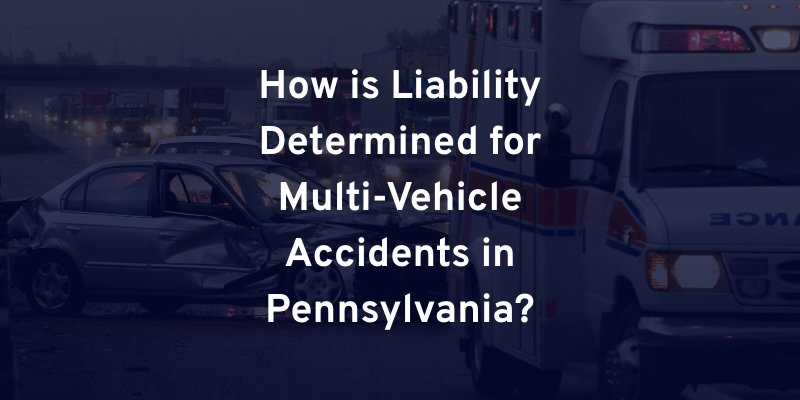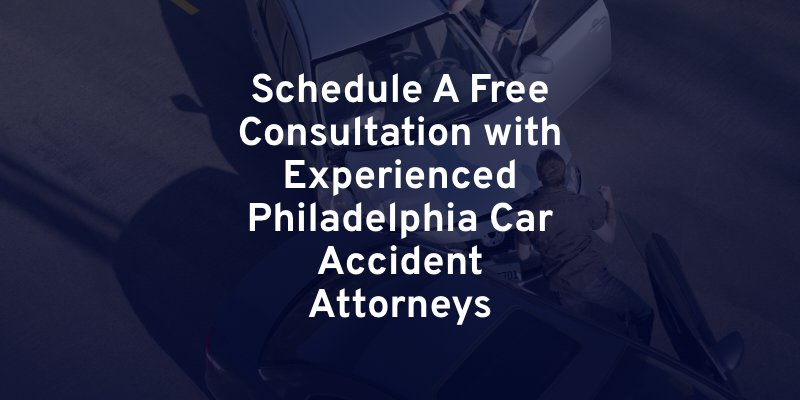How is Liability Determined for Multi-Vehicle Accidents in Pennsylvania?
When multiple vehicles are involved in a car accident in Philadelphia, determining liability becomes more complex. Consulting with a Philadelphia car accident lawyer can help and guide you in understanding the process of how fault is assigned in Pennsylvania. This is important for those desiring justice and compensation in such accidents. Understanding the process of how fault is assigned in Pennsylvania is crucial for those seeking compensation and justice in such situations.
Investigation and Evidence
A thorough investigation is often completed by multiple parties to determine liability for a multi-vehicle accident. For example:
Law Enforcement
At the scene, law enforcement will gather information from all parties involved. This includes taking statements from each driver, passenger, and any available witnesses. They will record each party’s version of events leading up to the collision. The officer will also look at physical evidence, such as skid marks, the location of damage to the vehicles, their positions, and any debris. In addition, they will consider environmental factors like weather conditions, visibility, road conditions, and whether any traffic laws were violated.
They may take photographs or make sketches to document the scene. This will help the officer reconstruct the accident and understand what may have caused the collision. Based on the information gathered, the police officer will compile an accident report that includes their findings and determination of fault. Usually, the party who first started a multi-vehicle accident is found at fault, or at least holds the majority of the blame.
Insurance Companies
When an insurance company investigates a multi-vehicle accident in Pennsylvania to determine fault, they follow a process similar to that of a police officer. An insurance adjuster will gather information from all parties involved, including obtaining statements from the drivers, passengers, and any available witnesses. They may also request copies of the police report, photographs, videos, or other relevant documents. Although the police report does not automatically mandate who is liable for a multiple-vehicle accident, it can weigh heavily in an insurance company’s decision on fault. Once the adjuster decides who is to blame, they will authorize insurance payouts to the appropriate parties depending on the type of car insurance coverage and claimed damages.
Pennsylvania’s Comparative Negligence Rule
In some multi-vehicle accidents, more than one party may share liability. Pennsylvania follows a 51% comparative negligence rule. This rule means that an injured party and their personal injury attorneys can seek compensation as long as they are not found to be 51% or more at fault for the collision. If the injured party is determined to be 51% or more to blame, they are barred from recovering any damages. This means that even if a party is partially responsible for the multi-vehicle accident, they may still be eligible to recover damages. However, the amount of compensation awarded is reduced by the percentage of fault.
For example, if it is determined that you were 30% at fault for the crash, and the total damages awarded are $100,000, you would be eligible to receive $70,000 (70% of the total damages).
How Pennsylvania’s Choice No-Fault Insurance Applies in Multi-Vehicle Accidents
If a driver involved in a multi-vehicle accident has chosen no-fault (Limited Tort) insurance coverage, they can typically seek benefits from their own insurance company, regardless of who was at fault for the collision. These benefits may include medical expenses, lost wages, and other allowable costs as outlined in their insurance policy. Choosing no-fault insurance means giving up some rights to sue for non-economic damages, such as pain and suffering or emotional distress unless your injuries meet the “serious injury” threshold established by Pennsylvania law. In contrast, if you have chosen Full Tort coverage, you can sue the at-fault party after a multi-vehicle accident, regardless of the severity of your injuries.

Who is Typically At Fault in a Multi-Vehicle Accident?
Here’s an overview of common fault scenarios and the factors involved in determining responsibility:
Rear-End Collisions and Chain Reactions
In many multi-vehicle accidents, a rear-end collision sets off a chain reaction, with one car hitting another, causing additional impacts down the line. In these cases, the driver who initially caused the rear-end impact is often primarily at fault for failing to maintain a safe following distance. However, drivers behind that initial collision may also share some liability if they were following too closely, speeding, or not paying attention, making it difficult to stop in time.
Sudden Lane Changes or Braking
If a driver suddenly changes lanes or brakes without warning, they could be at fault if this behavior causes vehicles behind them to crash. For instance, a car that suddenly swerves into another lane can create a dangerous situation for drivers who don’t have enough time to react. In these cases, witnesses, dashcam footage, and accident reconstruction experts may help clarify whether the driver’s actions were reasonable and avoidable, or if they created a hazardous condition.
Intersection Collisions
Multi-vehicle accidents often happen at intersections, where various parties may have different responsibilities based on the right of way, traffic lights, and signage. If one driver runs a red light or ignores a stop sign, they may be primarily at fault. However, other drivers could share responsibility if they were speeding, distracted, or failed to yield when necessary. Liability at intersections is often shared based on each driver’s actions leading up to the collision, and police reports or witness statements usually provide important context.
Bad Weather or Poor Road Conditions
In cases of poor weather, like rain or snow, all drivers are generally expected to adjust their speed and follow distance accordingly. If a driver fails to do so and loses control, they may be liable for the accident. However, in cases where poor road conditions (such as potholes or construction zones) directly contribute to the accident, a government entity or contractor responsible for road maintenance might also share some liability.
What Happens if the At-Fault Driver Doesn’t Have Insurance?
If an at-fault driver lacks insurance in Pennsylvania, accident victims can seek compensation through their own Uninsured Motorist (UM) or Underinsured Motorist (UIM) coverage, collision coverage, or Personal Injury Protection (PIP). Legal action is possible but successfully, recovering compensation can be challenging if the driver has limited assets.

A Philadelphia Car Accident Attorney Can Help
Given the complexities involved in determining liability for multi-vehicle accidents, it is highly recommended to consult an experienced car accident lawyer in Philadelphia. They can help you navigate the legal process, gather evidence, analyze negligence factors, and ensure you receive fair compensation.
Negotiating with Multiple Insurers
In cases involving multiple vehicles, each driver’s insurance company will attempt to minimize their liability by attributing a greater fault percentage to the other involved drivers. This scenario can lead to a “blame game,” where insurers dispute each other’s fault assessments. An attorney will handle all negotiations for you to ensure liability falls on the appropriate party.
Avoiding Common Pitfalls
Without an attorney, accident victims may face hurdles in securing fair settlements. Insurers might pressure you into accepting a low offer or delay compensation in the hope that you will get desperate and accept less than you deserve. Attorneys help mitigate these tactics by ensuring you have an evidence-based claim, reminding insurers of documented fault percentages, and, if necessary, taking the case to court.
